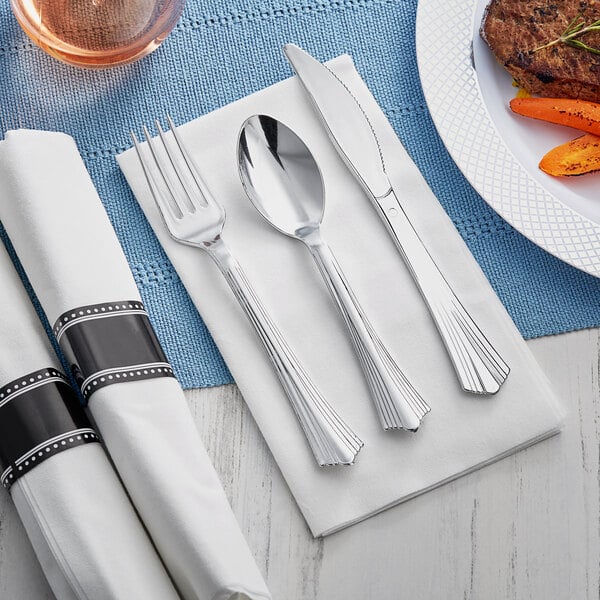Choosing plastic silverware can significantly impact the dining experience in foodservice settings. Businesses must consider functionality, visual appeal, and cost-effectiveness to meet their needs. From material composition to size and color options, each detail ensures quality and customer satisfaction with disposable dinnerware. Below are the key considerations when selecting plastic silverware for professional use.
1. Material
The material of plastic silverware affects its strength, flexibility, and environmental impact. Polystyrene offers rigidity and is ideal for foods requiring sturdy utensils, while polypropylene is more flexible and less prone to breaking. For eco-conscious establishments, compostable materials like plant-based plastics provide a sustainable alternative. Understanding the benefits of each type ensures the utensils align with their intended purpose.
2. Durability
The durability of your plastic dinnerware not only impacts how it feels in your hand but also determines the types of food you can comfortably serve with it. Every establishment will have different disposable plastic silverware needs. Some may only require a light option for occasional use, while others might need something sturdier to withstand heavy use. In general, the durability of plastic silverware corresponds with its weight.
- Medium weight: Medium weight plastic silverware is ideal for lighter dishes. It offers a slim and flexible feel in the hand but is not known for its durability. These utensils are great for quick-service establishments or situations where a utensil is needed in a pinch.
- Heavy weight: For a more durable option, consider heavy weight plastic silverware. It boasts a heavier feel in the hand and can be used in casual restaurants, catering services, and food trucks. Additionally, this option provides a sturdier, more substantial utensil for enjoying a range of entrees and hearty dishes.
- Extra heavy weight: For the most durable option available, extra heavy weight plastic silverware is the way to go. This is the thickest and most durable weight available, offering an enhanced dining experience. It can withstand a wide range of heavy foods and is perfect for catering services and restaurants looking to offer a premium dining experience.
3. Color
Plastic silverware comes in various colors to match the aesthetic of any event or business. Classic white or black utensils provide versatility and a clean look, while metallic finishes mimic the elegance of real silverware. For themed events, brightly colored or patterned options can enhance the visual appeal and complement the decor.
4. Size
Size affects both the practicality and comfort of plastic silverware. Standard-sized utensils suit most meals, while smaller options work well for appetizers or desserts. Longer, ergonomic handles add convenience and ease of use, particularly for buffet lines or casual dining. Choosing the right size ensures diners can enjoy their meal without hassle.











